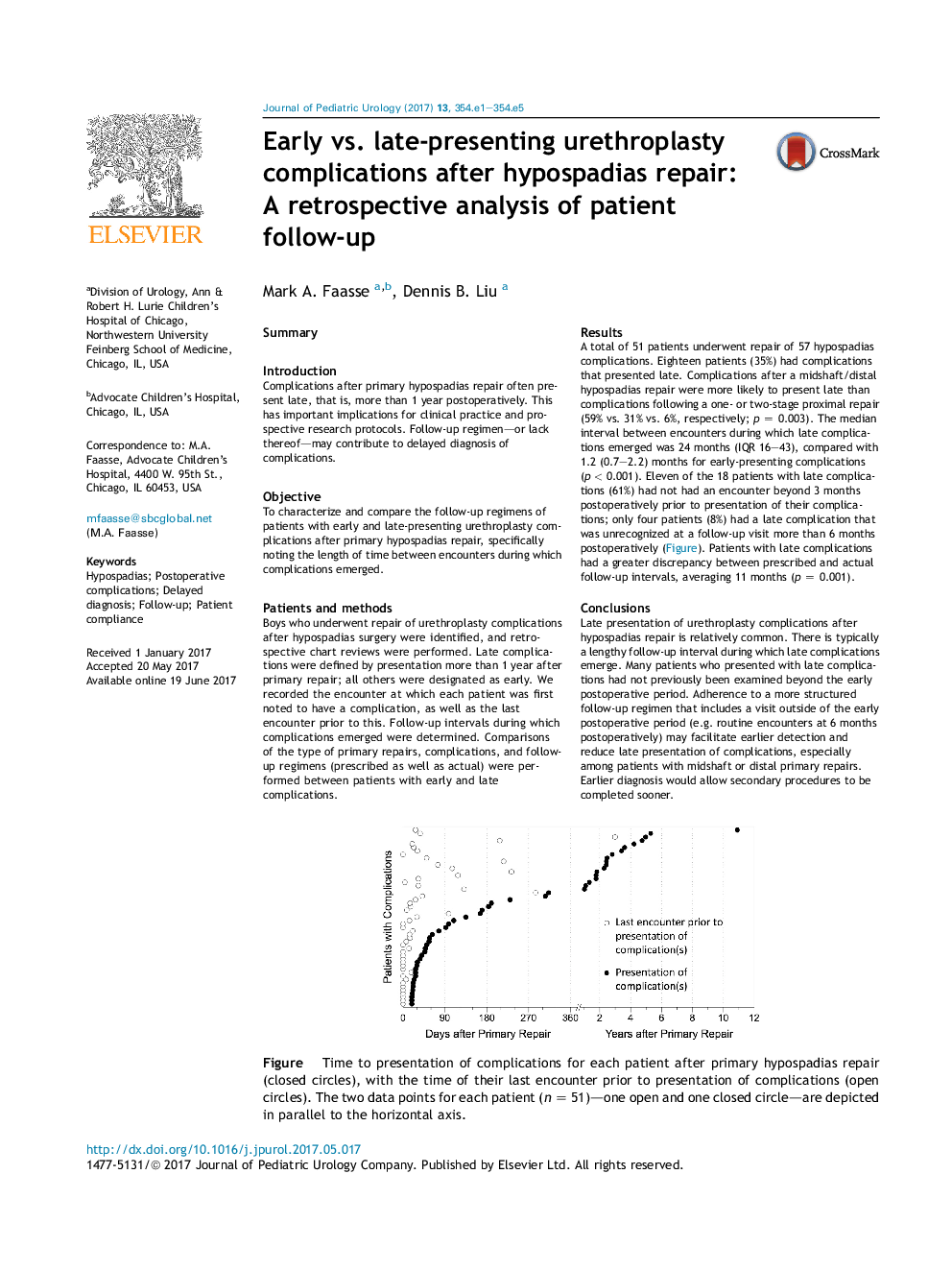| کد مقاله | کد نشریه | سال انتشار | مقاله انگلیسی | نسخه تمام متن |
|---|---|---|---|---|
| 5718537 | 1607135 | 2017 | 5 صفحه PDF | دانلود رایگان |
SummaryIntroductionComplications after primary hypospadias repair often present late, that is, more than 1 year postoperatively. This has important implications for clinical practice and prospective research protocols. Follow-up regimen-or lack thereof-may contribute to delayed diagnosis of complications.ObjectiveTo characterize and compare the follow-up regimens of patients with early and late-presenting urethroplasty complications after primary hypospadias repair, specifically noting the length of time between encounters during which complications emerged.Patients and methodsBoys who underwent repair of urethroplasty complications after hypospadias surgery were identified, and retrospective chart reviews were performed. Late complications were defined by presentation more than 1 year after primary repair; all others were designated as early. We recorded the encounter at which each patient was first noted to have a complication, as well as the last encounter prior to this. Follow-up intervals during which complications emerged were determined. Comparisons of the type of primary repairs, complications, and follow-up regimens (prescribed as well as actual) were performed between patients with early and late complications.ResultsA total of 51 patients underwent repair of 57 hypospadias complications. Eighteen patients (35%) had complications that presented late. Complications after a midshaft/distal hypospadias repair were more likely to present late than complications following a one- or two-stage proximal repair (59% vs. 31% vs. 6%, respectively; p = 0.003). The median interval between encounters during which late complications emerged was 24 months (IQR 16-43), compared with 1.2 (0.7-2.2) months for early-presenting complications (p < 0.001). Eleven of the 18 patients with late complications (61%) had not had an encounter beyond 3 months postoperatively prior to presentation of their complications; only four patients (8%) had a late complication that was unrecognized at a follow-up visit more than 6 months postoperatively (Figure). Patients with late complications had a greater discrepancy between prescribed and actual follow-up intervals, averaging 11 months (p = 0.001).ConclusionsLate presentation of urethroplasty complications after hypospadias repair is relatively common. There is typically a lengthy follow-up interval during which late complications emerge. Many patients who presented with late complications had not previously been examined beyond the early postoperative period. Adherence to a more structured follow-up regimen that includes a visit outside of the early postoperative period (e.g. routine encounters at 6 months postoperatively) may facilitate earlier detection and reduce late presentation of complications, especially among patients with midshaft or distal primary repairs. Earlier diagnosis would allow secondary procedures to be completed sooner.177Figure. Time to presentation of complications for each patient after primary hypospadias repair (closed circles), with the time of their last encounter prior to presentation of complications (open circles). The two data points for each patient (n = 51)-one open and one closed circle-are depicted in parallel to the horizontal axis.
Journal: Journal of Pediatric Urology - Volume 13, Issue 4, August 2017, Pages 354.e1-354.e5
